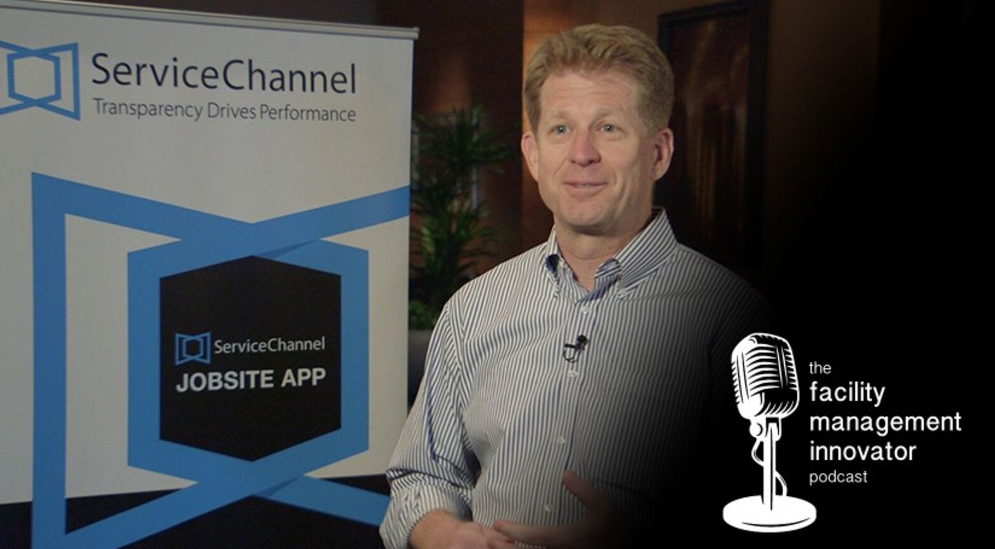The Value of CMMS in Retail Business Decisions
By Sid Shetty, President, inGEAR Business Analytics, a division of ServiceChannel
When PRSM launched its benchmarking initiative over a year ago it was evident that the facilities industry was moving away from being reactive, only concerned with fixing an issue at the store, to being proactive. The industry as a whole understands that it’s not enough for your last service call to have met all expectations. Managers are now very much interested in and expected to keep the big picture in mind. Today’s Facility Manager is a business manager focusing on solutions that will keep operations running smoothly at the location level while reducing dollars spent at the company-wide level. Such a task needs analytics powered by a continuous supply of rich and valuable information that is available on demand. So here’s the million dollar question; how does one increase service levels, decrease costs and then go a step further and report on how well the department is doing? Well that’s where today’s CMMS (Computerized Maintenance Management System) powered by business intelligence comes into play.
So what’s so special about a CMMS in the first place? Why is it important to have one? Well, ever wonder why the very stores you service have a POS (Point of Sale) system as opposed to individual cash registers? The whole point is to not just fulfill a transaction but also to automate as much as possible while gathering all the data you can to make better decisions. That’s the difference between a functioning store and a well-run chain. The same rules apply to facilities maintenance. With every service call we fulfill, we make a decision and take an action. Should we fix it? How much should it cost and how much should we pay? Whom should I award the job to? Repeat this action a few thousand times across hundreds of locations and suddenly a phone and an excel spreadsheet doesn’t seem too appealing. At least not with the limited resources we all have. CMMS solutions are designed to do one thing- make you efficient. And a CMMS solution with business intelligence does that even better. It allows you to replicate your decision-making process, set business rules to handle majority of service calls and capture data – data that you can then use to choose the right partners, modify your processes and monitor results. Yes, results that are evident again in the data you pull from your CMMS. Combine these increased efficiencies in process with better decision-making capabilities and the ROI is there for you to see.
At ServiceChannel, we work closely with our clients to put the data captured to work for them – in a way that truly makes sense and provides real insight. You need to have access to data that is not just accurate but also available when you need it. These are the basic principles of one of the most valuable tools in our tool belt – business intelligence! A well-implemented business Intelligence solution helps represent key metrics via visual, intuitive, timely and actionable reports.
Whether you are an Operational manager, Tactical manager or Strategic manager, business intelligence allows you to
- Monitor your department performance using dashboard style reporting
- Leverage scorecards to increase compliance
- Identify key opportunities to improve internal processes
Data is only as good as the conclusion it helps you derive and the action that follows. So a great report is one that has a lot of data right? Well, that depends. You can have all the data in a report that you could possibly fit but if it doesn’t help you make a decision fast and take an action, what good is it?
The Power of Dashboard Style Reporting
We all look at work order (WO) aging, but do we look at it every day or every week even? Do we breakdown aging by geographic regions? I know many of you are thinking that there is not enough time to run a report, modify it and then review and analyze it that often! But that’s the whole point of business intelligence, It puts reports like this at your disposal and all you need is 30 seconds to analyze the health of your WO’s. If you find an anomaly, you have the ability to drill down and find the problem area. Maybe, your WO’s are aging because proposals are not getting approved fast enough? How about looking at Proposal Aging?
Now let’s assume you are spending x dollars at a location, by itself, that number might seem totally fine and in line with what you think you should be spending (gut feeling). But what if you compare that spend with other locations in the same geographic region – how does that spend look now? What if you compare spend at that location with those of a similar build out or age? Or with a similar lease type? A few opportunities may come out of that comparison:
- You may investigate if the anomaly is constant or a recent trend? If it’s recent, why?
- If it’s constant, is it because it has different lease terms or a slightly unique build out? How does it compare to other locations in the same situation?
- Is it because it’s an older building? How does it compare with other locations in the same age bracket?
- Can you share some of this data with your real estate department to help them negotiate better deals?
The industry is very good at viewing spend by trade and category. Facility managers are experts and they know what their budgets are and what they should be spending at a location. However, how much should you be spending at the chain level? Are there any striking trends in spend at the Region or District level? Your overall spend might seem constant and in line with your gut, but are you missing out on an opportunity because you missed to notice a trend? We all know how HVAC spend trends in peak summer and peak winter, but:
- Do you know the effects of a change in your PM Schedule to your Demand Requests?
- Do you know what the ideal proportion of PM vs. Demand Spend is?
- Is there an effect in Demand Requests following a completed PM schedule?
How about a trade that might not have very obvious trends? Lighting:
- Is there a trend to the demand in lighting repairs?
- Is there a trend based on the type of fixtures installed? Can this lead to a study on which lighting fixtures cost more to maintain?
- What does the average lighting repair service call cost?
- How many light fixtures/bulbs go out before a service call is actually placed by the location?
- Does it make sense to have lighting program?
Another valuable metric I believe that can truly impact your business is Not To Exceed (NTE) optimization and NTE hit %. I.e. how do your NTE’s stand with regard to invoice averages and what percentage of your WO’s are resolved within the original NTE? Optimizing your NTE’s ensures that you control the percentage of calls that need escalation or manual intervention while keeping the risk of being overcharged at a minimum.
Scorecard Performance
We all hold our self up to high standards and expect the best service levels from our partners. Can we definitively say where our partners stand with regards to our expectations? And with each other? We might be able to use our gut and some feedback on a few individual calls and make assumptions based on that, however that’s definitely not the right way to do it. We are all used to scorecards, we grew up dreading them but it helped us analyze our performance and kept us in line with our parents’ and teachers’ expectations. How we measure our partners performance shouldn’t be any different. Scorecards are a very healthy way to keep ourselves and our partners in check. It benefits both of us, assuming our goals are aligned. So here are some things to think about:
- Do you know how long, on average, a partner takes to accept a call? By priority? By trade?
- Do you know where they stand with regards to the overall averages?
- Do you know how compliant your partners are with using the IVR system? What better check than IVR to ensure compliance at the location level?
While this seems really cumbersome, it’s really not. All this data is available, today, it just needs to be presented to you in a format that makes sense when you need it!
Identify Key Opportunities for Process Improvement
The customer is always right. In the facilities industry, our locations are our customers. Are we listening to them? Can you report on it? You should.
- Do you know if any of your recent sourcing changes have resulted in more positive feedback?
- Do you know if there is a relation between location feedback and the average age of your work orders?
- What is the average acceptable age of a WO before it is considered as being poorly serviced?
- Is there a relation between better aging of WO and higher costs per call?
- Are you able to view the average time spent at each step of a WO cycle? Can you do this by vendor? Or trade? Region? District?
Facility Managers have traditionally used some data in raw format and a whole lot of gut to make decisions. Successful facility managers know that you don’t need to follow your gut if you have the right data. You need to look back in history for true actionable information so you can make better decisions for the future.
Being part of PRSM’s benchmarking task force for the past year has made me realize that our industry is full of like-minded individuals with common goals. We are ready to take the next step in how we perceive and use information. This is our opportunity to come together to bring about standards and benchmarks that we all can measure ourselves against.
The previous article was published in the May/June 2012 issue of PRSM magazine.



